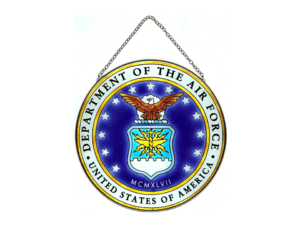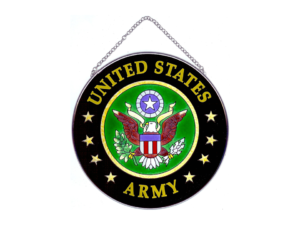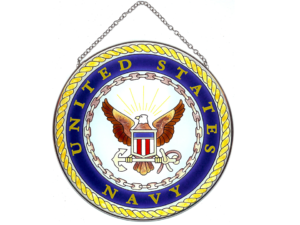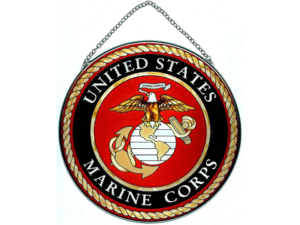America At War: 1775 – Present
America at War – A chronology of U.S. military interventions and the prices paid.
The world has known many kinds of war – from the “Hundred Years’ War” to the “Hundred Hour War”, the “Seven Years War” and the “Six-day War”, cold wars and phony wars, great wars and splendid little wars. Whatever anyone wants to call it, the truth is that war is part of humanity. It can be limited or deterred but it cannot be outlawed like a crime because there’s no consensus on who should play judge, and there’s waning interest in the roll of sheriff. Nor can it be cured like a disease because of the very nature of man, as some of history’s greatest thinkers have concluded. “There is a time for war and a time for peace,” Solomon wrote. America’s generals are seldom so matter-of-fact about war. William Tecumseh Sherman called it “hell”. Robert E. Lee said it was “terrible”. Dwight Eisenhower deplored it for “its brutality, its futility, and its stupidity.”
Drawn from various sources, including the Congressional Research Service, Congressional Budget Office, Department of Defense, Veterans Museum and Memorial Center, Smithsonian Institution and media outlets, the following is not an exhaustive catalog. After all, a Congressional Research Service index of U.S. military intervention tallies some 330 “notable deployments of U.S. military forces overseas” since 1798. This list does not include, for instance, myriad limited military engagements – blockades, humanitarian airdrops, rescue operations, raids and drone strikes. But by highlighting the vital statistics of our most consequential and/or costly military engagements, it traces war’s impact on America.
Revolutionary War:
- Dates: 1775 – 1783
- US Military Deaths: 4,435
- US Wounded: 6,188
- Cost: $101 million in 1770’s English Pounds – Equivalent to $120 million in today’s dollars with inflation included.
- Notes: The 4,435war deaths represent almost .2% of the population at the time. While the United states didn’t technically have a U.S. gross domestic product in 1775, we can get a sense of the war’s enormous economic costs b extrapolating from the GDP in 1790, when the entire nation’s wealth totaled only $189 million.
Barbary War:
- Dates: 1801 – 1805 and 1815
- US Military Deaths: 35
- US Wounded: 64
- Notes: In 1795, the united states paid almost $1 million to ransom 115 sailors. Thomas Jefferson bitterly opposed this policy and overturned it as president, declaring “it will be easier to raise ships and men to fight these pirates into reason, than money to bribe them”.
War of 1812:
- Dates: 1812 – 1815
- US Military Deaths: 2,260
- US Wounded: 4,505
- Total Serving: 286,730
- Cost: $90 million
- Notes: After defeating the British Empire less than 30 years earlier, the young republic was soundly swatted back into place in 1812. U.S. forces were routed in Canada, U.S. vessels seized, U.S. ports blockaded, and the Capitol and White House set Ablaze. Congress declared war against Britain in June 1812.
Indian Wars:
- Dates: 1813 – 1838 and 1866 – 1890
- U.S. Military Deaths: 1,000
- Total Serving: 106,000
- Notes: We know that some 4,000 Cherokee died during their forced westward migration in 1838 but estimates range wildly about the number of Native Americans who died in the frontier wars.
Mexican War:
- Dates: 1846 – 1848
- U.S. Military Deaths: 13,283
- U.S. Wounded: 41,152
- Total Serving: 78,718
- Cost: $71 Million
- Notes: To put pressure on Mexico, President James Polk sent Gen. Zachary Taylor to a disputed area between the Rio Grande, where the United States defined the border, and the Nueces River, where Mexico defined it. To Mexican troops this was an act of aggression, and they attacked Taylor’s forces. Congress Declared war against Mexico in May 1846 after only a few hours of debate.
Civil War:
- Dates: 1861 – 1865
- Union Military Deaths: 364,511
- Confederate Military Deaths: 133,821
- Union Wounded: 281,811
- Union Cost: $3 Billion
- Total Serving: 2,213,363 (Union), 1,082,119 (Confederate)
Spanish American War:
- Dates: 1898
- U.S. Military Deaths: 2,446
- U.S. Wounded: 1,662
- Cost: $283 million
- Total Serving: 306,760
- Notes: Long before .S. forces rescued post-tsunami Sumatra, triaged post war Bosnia, fed Somalia, protected Kosovo and Kurdistan, and defended Libyans from Gaddafi or Yazidis from Islamic State, Theodore Roosevelt argued against “cold blooded indifference to the misery of the oppressed.” Even when ‘our own interests are not greatly involved, he declared, “action may be justifiable.” The American people took such action as Spain crushed Cuban independence efforts – arguably America’s first humanitarian war. Of course, the war also had strategic implications, as Washington used Spain’s mistreatment of Cuba as a pretext to move against Spanish possessions in the Philippines, Puerto Rico and Guam. Following the sinking of USS Maine, Congress declared war in April 1898
Philippines:
- Dates: 1899 – 1901
- U.S. Military Deaths: 4,200
- U.S. wounded: 2,800
- Total Serving: 120,000
- Notes: Not unlike the Iraq war a century later, the postwar occupation of the Philippines led to an insurgency that proved far bloodier than the initial conflict.
Mexico:
- Dates: 1914 – 1919
- U.S. Military Deaths: 21
- U.S. Civilian Deaths: 35
- U.S. Forces Deployed: 6,000
- Notes: Supporting anti-government revolutionaries inside Mexico, President Woodrow Wilson ordered U.S. troops to seize the port at Veracruz and prevent the shipment of German arms to the Mexican government. The government was ousted, just as Wilson wanted. But when the new government proved too independent for Wilson, he began supporting forces under the command of Pancho Villa. When Wilson recognized the Mexican government, the spurned Villa launched raids into the United States, killing dozens of American civilians. Wilson the ordered Gen. John Pershing to lead an expedition into Mexico to kill or capture Villa, but events in Europe soon trumped all other matters of foreign policy.
World War I:
- Dates: 1917 – 1918
- U.S. Military Deaths: 116,516
- U.S. Wounded: 204,002
- Total Serving: 4.73 million
- Cost: $20 Billion
- Notes: Congress declared war on Germany and Austria-Hungary in 1917, after Germany resumed unrestricted submarine warfare and tried to lure Mexico into the war against the United States.
World War II:
- Dates: 1941 – 1945
- U.S. Military Deaths: 405,399
- U.S. Wounded: 670,846
- Total Serving: 16 Million
- Cost: $296 Billion (4.3 Trillion in today’s dollars!)
- Notes: In 1941, Congress declared war on Japan after the attack on Pearl Harbor, and then on Germany and Italy after their declarations of war against the United Sates. In 1942, Congress declared war on Bulgaria, Hungary, and Romania after they declared war on the United States.
Cold War:
- Dates: 1947 – 1991
- Total Serving: 35 Million
- Cost: $4.65 Trillion
Berlin Airlift:
- Dates: 1948 – 1949
- U.S. Military Deaths: 31
- Total Serving: 32,900
- Cost: $224 Million ($2.2 Billion in today’s dollars!)
- Notes: Blending the principles of strategic bombing with the efficiency of a Detroit assembly line, Lt. Gen. Curtis LeMay crafted an air campaign unlike any in history. From June 1948 to September 1949, Allied pilots flew 277,000 missions and delivered 2.3 million tons of supplies to Berlin. About 75% of those missions were flown by Americans.
Korean War:
- Dates: 1950 – 1953
- U.S. Military Deaths: 36,574
- U.S. Wounded: 103,284
- Total Serving: 1,789,000
- Cost: $30 Billion
- Notes: The war’s economic cost as a percentage of GDP and battle deaths as a percentage of total military deaths underscore why The New York Times called Korea “World War 2.5”
Vietnam War:
- Dates: 1965 – 1975
- U.S. Military Deaths: 58,220
- U.S. Wounded: 153,303
- Total Serving: 3,403,000
- Cost: $111 Billion
- Notes: Congress authorized President Lyndon Johnson to use “all nece3ssary measures: against North Vietnam in 1964 after U.S. warships came under apparent attack in the Gulf of Tonkin. When Johnson asked military leaders what they needed to win, the answer was seven years, 700,000 to 1 Million troops and an unfettered air campaign. Instead Johnson and President Richard Nixon launched a combined 16 bombing pauses and 72 peace initiatives, thus undercutting battlefield momentum.
Lebanon:
- Dates: 1982 – 1984
- U.S. Military Deaths: 265
- U.S. Wounded: 177
- Total Serving: 1,800
- Notes: President Ronald Reagan deployed 1,000 Marines to Lebanon as part of a congressionally authorized multinational peacekeeping force. Also deployed were elements of the 6th Fleet, including USS New Jersey, which unloaded its 16-inch guns during the campaign, and the carriers Independence and John F. Kennedy, which launched airstrikes into the war zine. On Oct. 23, a truck loaded with explosives rammed into the Marine barracks in Beirut, killing 241 Americans.
Grenada:
- Dates: 1983
- U.S. Military Deaths: 19
- U.S. Wounded: 116
- Total Serving: 5,000
- Notes: Reagan deployed U.S. forces to Grenada to rescue U.S. citizens, reverse a Cuban-backed coup and restore order. U.S. forces discovered 800 Cuban advisers and enough weaponry to arm 10,000 troops.
Persian Gulf:
- Dates: 1987 – 1988
- Notes: As the Iran-Iraq War spilled into the Persian Gulf, the two belligerents began attacking commercial shipping. Iranian fighters strafed Kuwaiti tankers. Iran boarded a U.S. civilian ship. An Iraqi warplane attacked the USS Stark killing 37 sailors. To protect Kuwaiti vessels from the maelstrom, the United States began reflagging and escorting Kuwaiti ships. In April 1988, USS Samuel B. Roberts struck an Iranian in northeast of Qatar. The attack prompted Reagan to order Operation Praying Mantis. By the end of the operation, U.S. air and surface units had sunk or severely damaged half of Iran’s operational fleet.
Panama:
- Dates: 1989 – 1990
- U.S. Military Deaths: 23
- U.S. Wounded: 322
- Total Serving: 26,000
- Notes: In December 1989, President George H.W. Bush dispatched U.S. troops to protect American citizens, restore Panama’s democratically elected government and apprehend Gen. Manuel Noriega, who had been involved in drug trafficking, weapons smuggling and a campaign of violence against his political opponents.
Gulf War:
- Dates: 1990 – 1991
- U.S. Military Deaths: 382
- U.S. Wounded: 467
- Total Serving: 694,550
- Cost: $61 Billion*
- Notes: The United States led a large international coalition to defend Saudi Arabia from attack (Desert shield) and eject Saddam Hussein’s military from Kuwait (Desert Storm). Congress passed an authorization for use of military force. An asterisk is attached to the cost of the war because it was largely underwritten by international partners
Iraqi Kurdistan:
- Dates: 1991
- U.S. Military Deaths: 5
- Total Serving: 12,316
- Notes: When Hussein moved against Kurdish minorities at the end of the first Gulf War, Bush dispatched U.S. forces to mount a massive humanitarian operation in northern Iraq. U.S. forces rescued 400,000 Kurds from starvation. The five American deaths came in the initial phase of Operation Provide Comfort and were caused by land mines, weapons misfires and transport accidents.
Somalia:
- Dates: 1992 – 1994
- U.S. Military Deaths: 43
- Total Serving: 28,000
- Cost: $2.22 Billion
- Notes: Acting in response to U.N. resolutions, Bush dispatched 28,000 troops to Somalia in the closing hours of his presidency to protect food shipments from tribal warfare and looting. But in 1993, the United Nations expanded the limited humanitarian mission into an ambitious nation building effort. When Somali clans ambushed U.N. peacekeepers, President Bill Clinton sent hundreds of U.S. Army Rangers and Delta Force operators into Mogadishu to apprehend clan leaders, leading to the bloody “Black Hawk Down” episode and triggering the beginning of the end of America’s mercy mission in Somalia.3
Haiti:
- Dates: 1994 – 1996
- U.S. Military Deaths: 4
- Total Serving: 27,253
- Cost: $2 Billion
- Notes: President Clinton dispatched troops to Haiti to restore the democratically elected president to office and stabilize the troubled country. This was nothing new: U.S. forces intervened 16 times in Haiti between 1900 and 1913, before a lengthy occupation from 1915 to 1934. President George W. Bush sent troops into Haiti in 2004, as did President Barack Obama in 2010.
Bosnia:
- Dates: 1995 – 2004
- Total Serving: 100,000
- Cost: 15 Billion
- Notes: Between 1995 and 1995, the war in Yugoslavia claimed 250,000 people. It wasn’t until a U.S. led air armada was allowed to take the offensive against Serbian militiamen in late 1995 that Serb strongman Slobodan Milosevic finally came to the peace table. In December 1995, Clinton ordered the deployment of 25,000 troops to Bosnia as part of NATO’s follow-on peacekeeping operation. By the latter half of 2003, the United States had sustained only one hostile fatality
Kosovo:
- Dates: 1999 – present
- Total Serving: 31,600
- Cost: 10 Billion
- Notes: When Milosevic tried to repeat in Kosovo what he had perpetrated in Bosnia, NATO launched a 78-day air campaign targeting his army and government. Milosevic’s regime was mortally wounded, and 850,000 Kosovar refugees returned home. Two U.S. pilots were killed when their helicopter crashed in Albania. In addition, during the first year of the peacekeeping mission, three U.S. troops died in accidental deaths and 24 were injured. About 660 U.S. troops remain in Kosovo, down from 7,000 in 1999.
Global War on Terrorism, Operation Enduring Freedom, Operation Freedom’s Sentinel, Operation Resolute Support:
- Dates: 2001 – Present
- U.S. Military Deaths: 2355 (as of March 2015)
- U.S. Wounded: 20,067
- Americans killed on September, 2001
- Notes: The Bush and Obama administrations have reported “U.S. anti-terror related activities” in Kenya, Ethiopia, Eritrea, Afghanistan, Pakistan, the Philippines, Georgia, Yemen, Iraq, Djibouti and Somalia. In addition, DOD reports casualties have occurred in Guantanamo Bay, Djibouti, Eritrea, Ethiopia, Jordan, Kenya, Kyrgyzstan, Pakistan, Philippines, Seychelles, Sudan, Tajikistan, Turkey, Uzbekistan, and Yemen. This explains the differing casualty numbers for what might be called “OEF-Global:” and “OEF-Afghanistan”. OEF officially gave way to Operation Freedom’s Sentinel and Operation Resolute Support in Afghanistan in late 2014. Congress passed an AUMF in September 2001. According to the 9/11 commission, “Calling this struggle a war accurately describes the use of American and allied armed forces to find and destroy terrorist groups and their allies in the field.”
Afghanistan:
- Dates: 2001 – Present
- U.S. Military Deaths: 2,215 (as of March 2015)
- U.S. Military Wounded: 20,026
- Total Serving: 831,576
- Cost: 826 Billion
- Notes: The war in Afghanistan began Oct. 7, 2001. Within weeks, U.S. forces, in conjunction with an indigenous alliance of anti-Taliban militia, toppled the Taliban regime. Then U.S. troop levels in Afghanistan began to increase to a high of 100,000 in 2010. Estimates that an additional $1 Trillion will be appropriated from 2015 to 2024 “for military operations and diplomatic activities in Afghanistan and other possible overseas contingency operations.”
Operation Iraqi Freedom, Operation New Dawn:
- Dates: 2003 – 2011
- U.S. Military Deaths: 4,491
- U.S. Wounded: 32,244
- Total Serving: 1.5 Million
- Cost: 820 Billion
- Notes: Congress authorized military action against Iraq in October 2002, citing “Iraq’s ongoing support for international terrorist groups” and “development of weapons of mass destruction.” Saddam Hussein’s army and regime were quickly routed, but Iraq’s postwar war proved costly, and the costs continue to mount.
Operation Inherent Resolve:
- Dates: 2014 – Present
- U.S. Military Deaths: 3 (as of March 2015)
- Cost: $8.4 million per day
- Notes: The earlier stated casualty numbers and economic figures from the Iraq war do not enfold the U.S. military campaign in Iraq and Syria targeting the Islamic State. With military commanders expecting the operation to last more than three years, Iraq promises to dominate the balance of Obama’s presidency, just as it did the previous three administrations. This August will mark 25 years that the United States has been wrestling with Iraq.
This article is a duplication of one that was published in “The American Legion”. May 2015 issue.
These suncatchers are a stained glass piece commemorating those that are serving or have served in our armed forces. Emblazoned with the different services coat of arms, these can be given to anyone with a connection to any branch of the U.S. military. Proudly display your branch of service so everyone will know your commitment to your country. They make great gifts too!! Please click on the image to be taken to the product page.
If you have served, past, present or considering future – thank you for your service and keeping our country the best place to live in the world! Semper Fi!







Leave a Reply